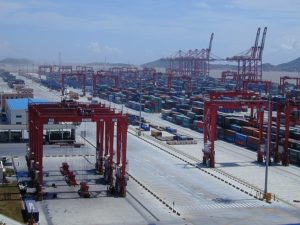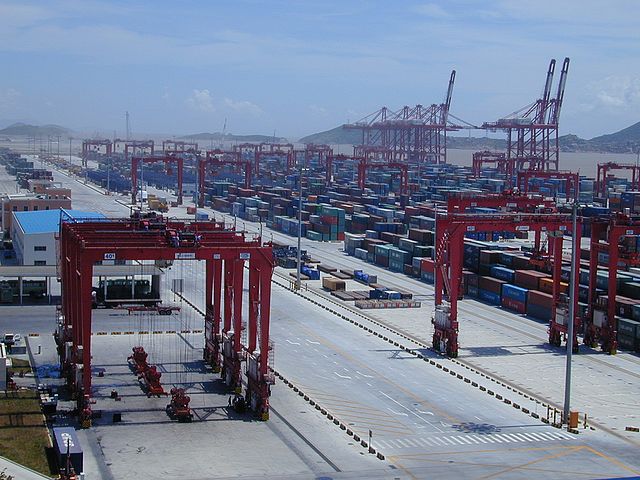 Port of Shanghai is the world’s top container port in terms of number of direct connections in 2020, while Rotterdam is the port best located to connect other ports through them, according to a new report.
Port of Shanghai is the world’s top container port in terms of number of direct connections in 2020, while Rotterdam is the port best located to connect other ports through them, according to a new report.
Shanghai is the best in terms of “degree” of direct port connections with 288 direct connections, according to the report from the United Nations Conference on Trade and Development (UNCTAD) on ports’ positions and connectivity in the global shipping network.
It is followed by Busan (274 direct connections), Antwerp (268), Rotterdam (264), and Ningbo (258).
Rotterdam has the most port-to-port connections, its “betweenness” among ports providing the best option in terms of minimizing the number of necessary transhipments. In 2020, there are 42,656 port-to-port connections that include Rotterdam on their optimal routes. Among the global total of 440,391 port-to-port connections, for 9.7% of optimal routes, Rotterdam is included as a transshipment port.
The list of top ports in terms of “betweenness” also includes Antwerp in second place, followed by Hamburg, Xingang, and Jakarta.
Under the criteria “degree” or direct connections, major Asian ports are better connected than the major European ports, while under the criteria “betweenness” the major European ports are better connected, said the report.
Meanwhile the port pair that is best connected through direct services is Ningbo-Shanghai, with 52 liner shipping companies providing direct services between the two ports. It is followed by Port Klang-Singapore (41 companies), Busan-Shanghai (38), and Shanghai-Quingdao (37).
All top 50 best connected port pairs are on intra-regional routes, almost exclusively intra-Asian, except for two intra-European connections, which are Antwerp-Rotterdam with 24 companies, and Hamburg-Rotterdam with 23 companies.
In other regions, too, it is mostly neighboring ports that are best connected with each other. The high connectivity is the result of being connected to the same overseas routes, combined with feedering and transhipment services, noted the paper.
In the second quarter of 2020, there were 939 container ports in the world that received regular liner shipping services. If all ports had direct services between each other, there would be 440,391 direct port-to-port liner shipping connections.
However, only 12,748 port pairs actually have such direct connections, or just 2.9% of the theoretical total. For 97.1% of port pairs, containers need to be transhipped in other ports. The least connected port pairs require up to six transhipments, with seven direct port-to-port services and 14 port moves for one trade transaction.
The report also looked at how many different carriers shippers may have on their routes of choice.
It found that among the 12,748 direct port-to-port connections that do not require a transhipment in 2020, on 6,017 of them (47.2%) services are provided by only one single company, while on 2,751 routes (21.6%), there is competition among two providers. On the remaining 3,980 port pairs (31.2%), there are three or more carriers offering their container shipping services.
The report also highlighted the following network changes between the second quarter of 2006 and the second quarter of 2020.
- The number of container ports in the network has increased by 13%, from 834 to 939. The average node betweenness increased by 27% during the same period, reflecting the growth of the overall network, and the reduction of direct port-to-port services.
- The center of the network in terms of the largest nodes and the position within the network has shifted from Europe to Asia. The three ports that most improved their degree are located in China (Nansha, Ningbo, and Shekou), while the three ports that saw the largest decline of their degree are in the United Kingdom (Tilbury and Felixstowe) and Venezuela (Puerto Cabello).
- The share of port pairs that count on direct services decreased from 3.7% in 2006 to 2.9% in 2020, reflecting a trend towards the use of transhipment services.
- The average number of companies providing services per port pair remained constant at 2.7 companies.
Photo By Alex Needham and Zolo, Public Domain





